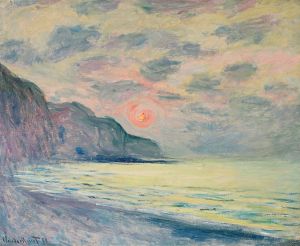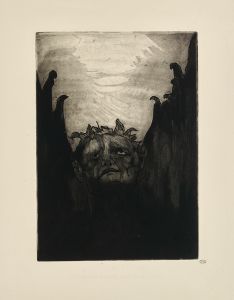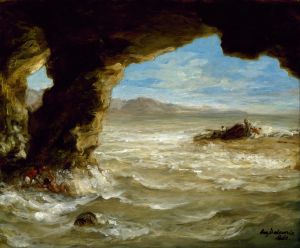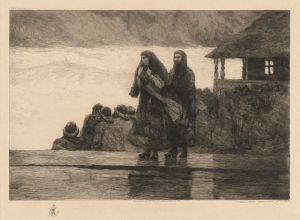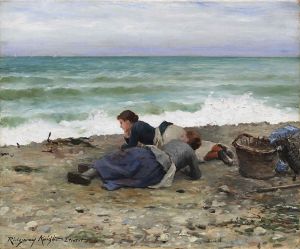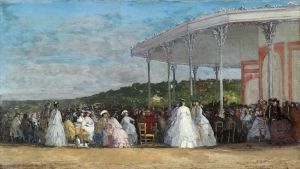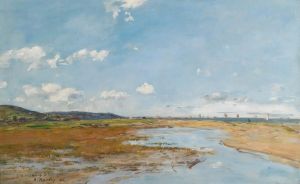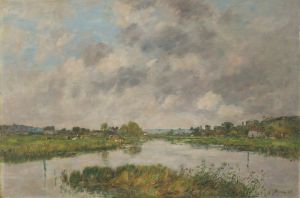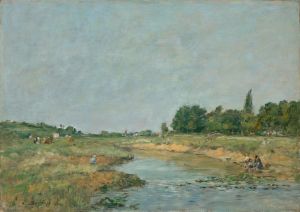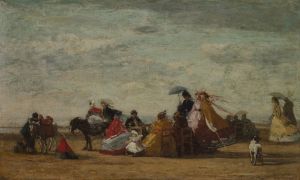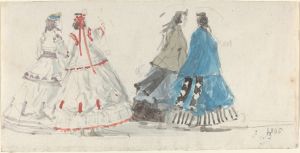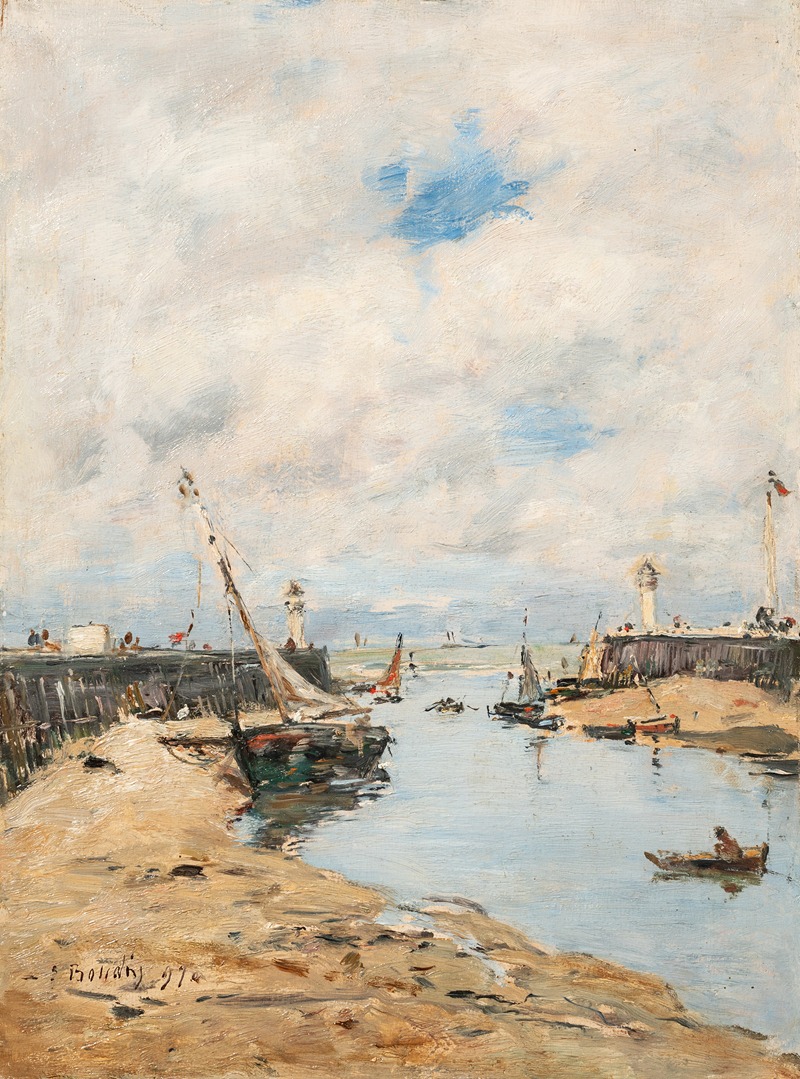
Trouville, le lougre échoué
A hand-painted replica of Eugène Boudin’s masterpiece Trouville, le lougre échoué, meticulously crafted by professional artists to capture the true essence of the original. Each piece is created with museum-quality canvas and rare mineral pigments, carefully painted by experienced artists with delicate brushstrokes and rich, layered colors to perfectly recreate the texture of the original artwork. Unlike machine-printed reproductions, this hand-painted version brings the painting to life, infused with the artist’s emotions and skill in every stroke. Whether for personal collection or home decoration, it instantly elevates the artistic atmosphere of any space.
Eugène Boudin, a prominent French painter, is renowned for his seascapes and beach scenes that capture the essence of the Normandy coast. One of his notable works is "Trouville, le lougre échoué," which translates to "Trouville, the Stranded Lugger." This painting exemplifies Boudin's skill in portraying maritime subjects and his keen observation of light and atmosphere.
Eugène Boudin was born on July 12, 1824, in Honfleur, a port town in Normandy, France. He is often credited as one of the forerunners of Impressionism, although his style is more closely aligned with the Realist movement. Boudin's early exposure to the sea and the bustling activity of the ports greatly influenced his artistic focus. He was particularly fascinated by the interplay of light and water, which became a central theme in his work.
"Trouville, le lougre échoué" is set in Trouville-sur-Mer, a coastal town in Normandy that was a popular destination for artists and tourists in the 19th century. The painting depicts a lugger, a type of small sailing vessel, stranded on the beach. Boudin's choice of subject reflects his interest in the everyday life of coastal communities and the relationship between humans and the sea.
In this painting, Boudin employs his characteristic loose brushwork and a muted color palette to convey the atmospheric conditions of the scene. The sky is overcast, with clouds that suggest an impending change in weather, a common feature in Boudin's seascapes. The stranded lugger is positioned prominently in the composition, drawing the viewer's attention to its predicament. Surrounding the vessel, figures can be seen attending to the boat, adding a narrative element to the scene.
Boudin's ability to capture the transient effects of light and weather is evident in "Trouville, le lougre échoué." His technique involves applying paint in thin layers, allowing the underlying colors to shimmer through, which enhances the sense of luminosity and depth. This approach not only highlights the physical characteristics of the scene but also evokes an emotional response, inviting viewers to contemplate the beauty and unpredictability of nature.
Throughout his career, Boudin maintained a deep connection to the Normandy coast, often returning to familiar locations to paint en plein air. His dedication to capturing the natural world with honesty and sensitivity earned him the admiration of his contemporaries, including Claude Monet, who regarded Boudin as a mentor and an inspiration.
"Trouville, le lougre échoué" is a testament to Boudin's mastery of marine painting and his ability to convey the subtle nuances of coastal life. The painting is a valuable piece of art history, reflecting the cultural and environmental aspects of 19th-century France. Boudin's work continues to be celebrated for its contribution to the development of modern art, bridging the gap between Realism and Impressionism.
Today, Eugène Boudin's paintings, including "Trouville, le lougre échoué," are held in high esteem and can be found in major art museums and collections around the world. His legacy endures through his influence on subsequent generations of artists and his enduring portrayal of the natural world.





